Valentin Wüstholz
Automatically Testing Functional Properties of Code Translation Models
Sep 07, 2023Abstract:Large language models are becoming increasingly practical for translating code across programming languages, a process known as $transpiling$. Even though automated transpilation significantly boosts developer productivity, a key concern is whether the generated code is correct. Existing work initially used manually crafted test suites to test the translations of a small corpus of programs; these test suites were later automated. In contrast, we devise the first approach for automated, functional, property-based testing of code translation models. Our general, user-provided specifications about the transpiled code capture a range of properties, from purely syntactic to purely semantic ones. As shown by our experiments, this approach is very effective in detecting property violations in popular code translation models, and therefore, in evaluating model quality with respect to given properties. We also go a step further and explore the usage scenario where a user simply aims to obtain a correct translation of some code with respect to certain properties without necessarily being concerned about the overall quality of the model. To this purpose, we develop the first property-guided search procedure for code translation models, where a model is repeatedly queried with slightly different parameters to produce alternative and potentially more correct translations. Our results show that this search procedure helps to obtain significantly better code translations.
Specifying and Testing $k$-Safety Properties for Machine-Learning Models
Jun 13, 2022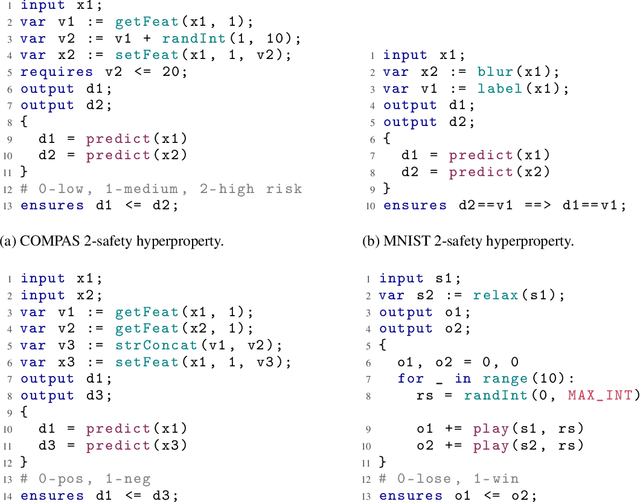
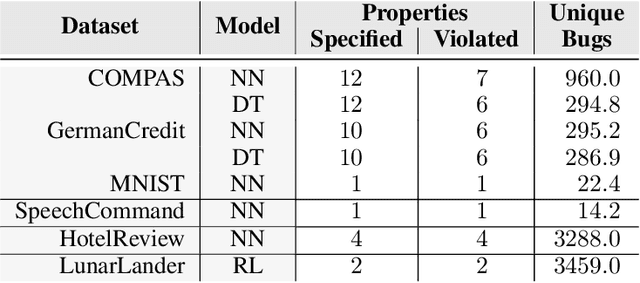
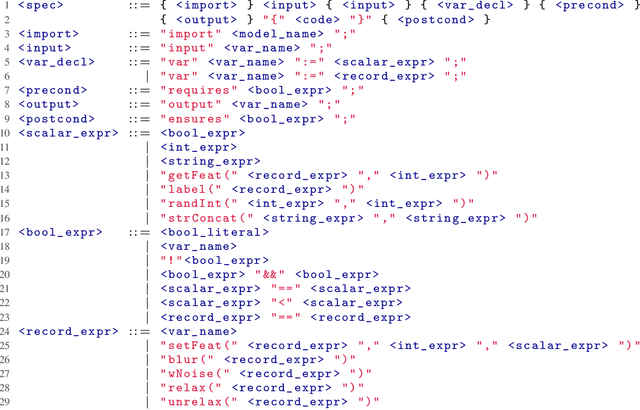
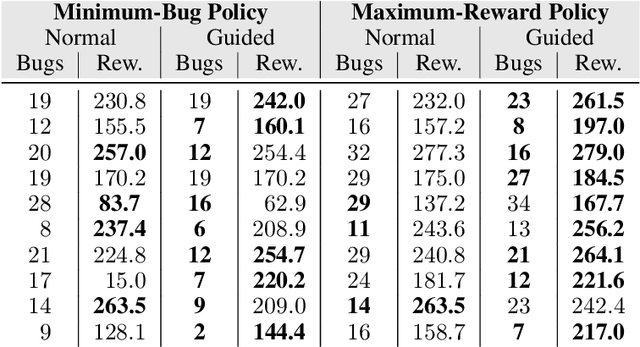
Abstract:Machine-learning models are becoming increasingly prevalent in our lives, for instance assisting in image-classification or decision-making tasks. Consequently, the reliability of these models is of critical importance and has resulted in the development of numerous approaches for validating and verifying their robustness and fairness. However, beyond such specific properties, it is challenging to specify, let alone check, general functional-correctness expectations from models. In this paper, we take inspiration from specifications used in formal methods, expressing functional-correctness properties by reasoning about $k$ different executions, so-called $k$-safety properties. Considering a credit-screening model of a bank, the expected property that "if a person is denied a loan and their income decreases, they should still be denied the loan" is a 2-safety property. Here, we show the wide applicability of $k$-safety properties for machine-learning models and present the first specification language for expressing them. We also operationalize the language in a framework for automatically validating such properties using metamorphic testing. Our experiments show that our framework is effective in identifying property violations, and that detected bugs could be used to train better models.
RAID: Randomized Adversarial-Input Detection for Neural Networks
Feb 07, 2020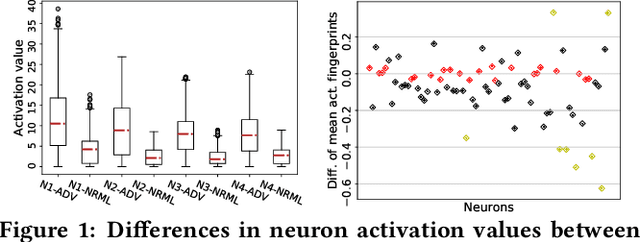
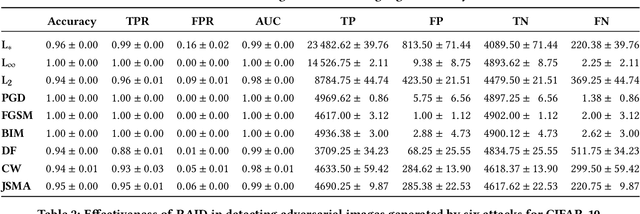
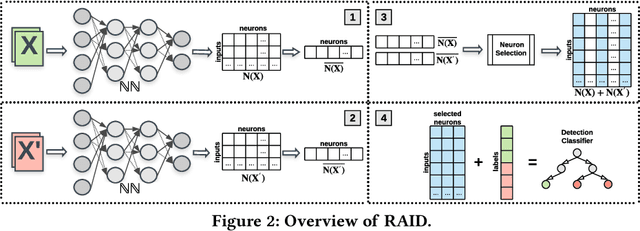
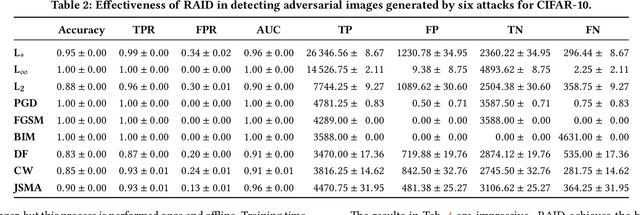
Abstract:In recent years, neural networks have become the default choice for image classification and many other learning tasks, even though they are vulnerable to so-called adversarial attacks. To increase their robustness against these attacks, there have emerged numerous detection mechanisms that aim to automatically determine if an input is adversarial. However, state-of-the-art detection mechanisms either rely on being tuned for each type of attack, or they do not generalize across different attack types. To alleviate these issues, we propose a novel technique for adversarial-image detection, RAID, that trains a secondary classifier to identify differences in neuron activation values between benign and adversarial inputs. Our technique is both more reliable and more effective than the state of the art when evaluated against six popular attacks. Moreover, a straightforward extension of RAID increases its robustness against detection-aware adversaries without affecting its effectiveness.
 Add to Chrome
Add to Chrome Add to Firefox
Add to Firefox Add to Edge
Add to Edge